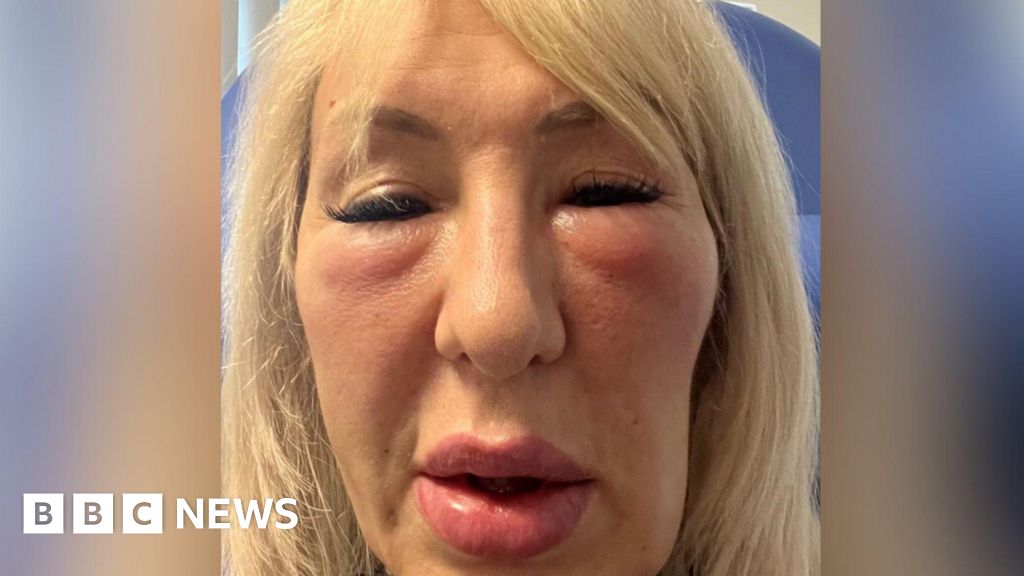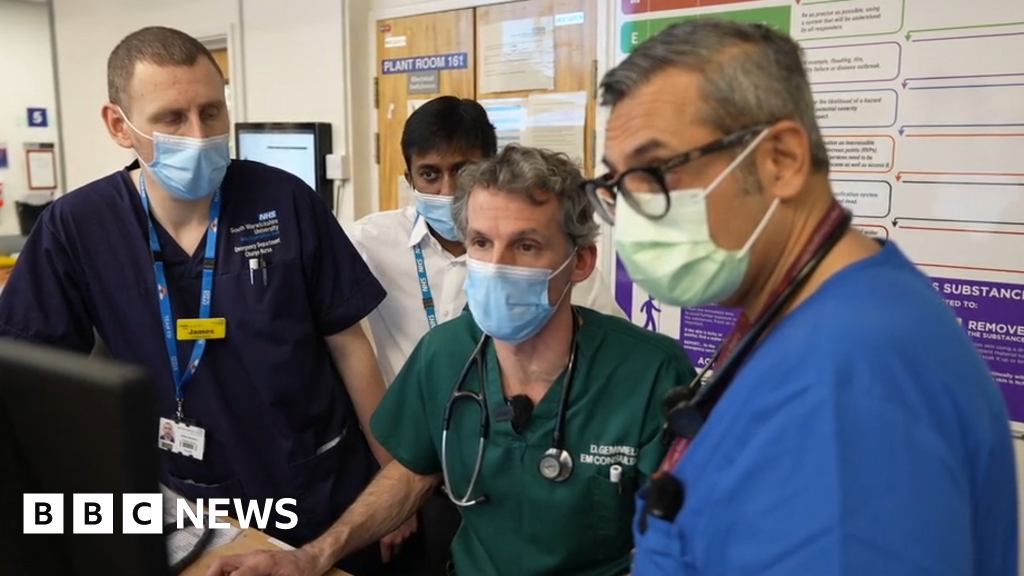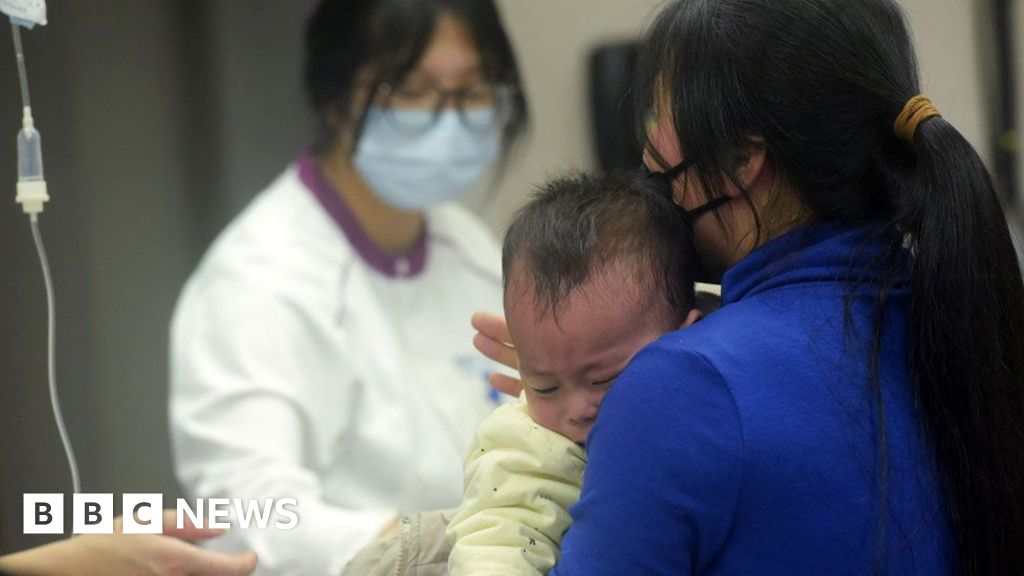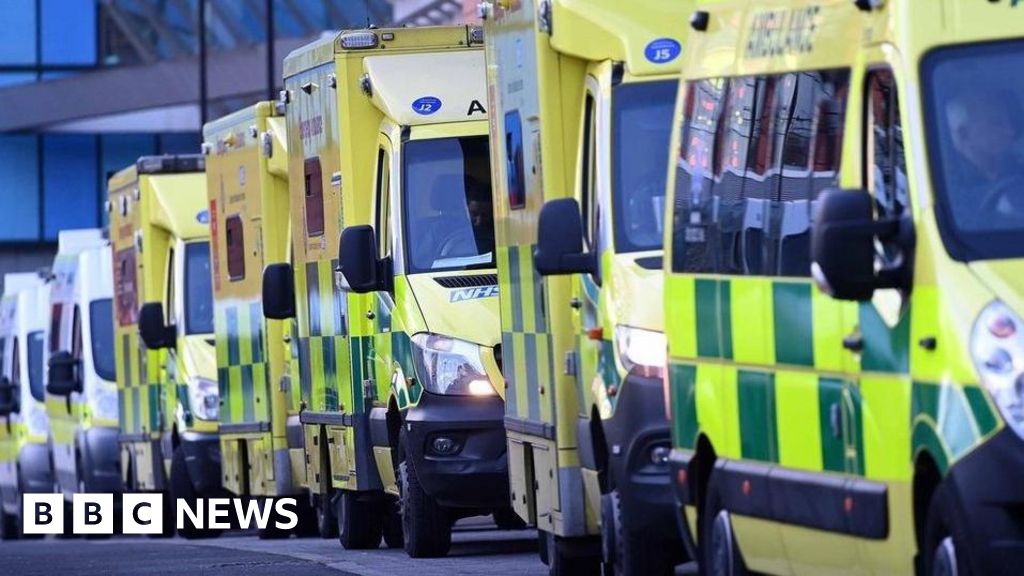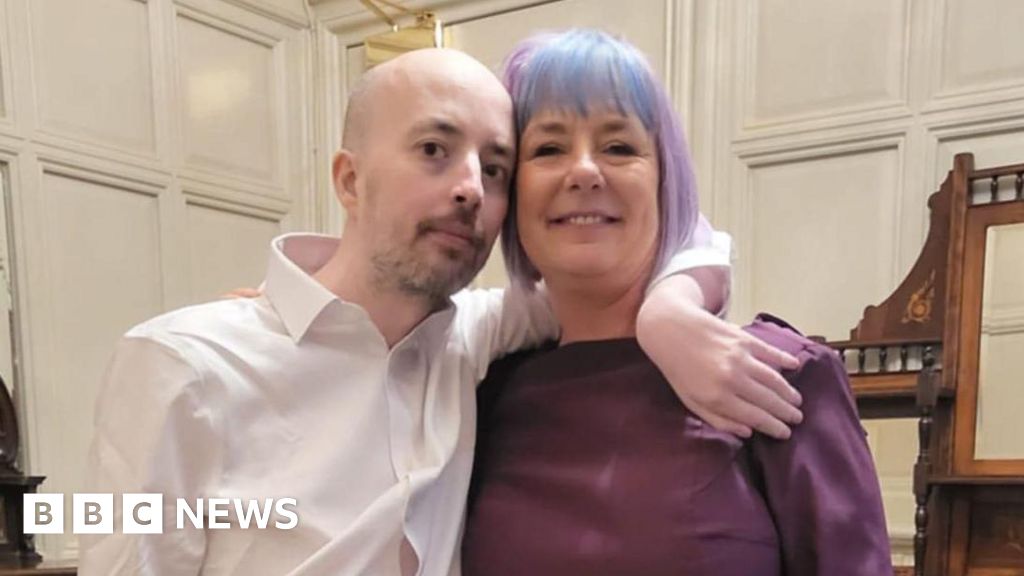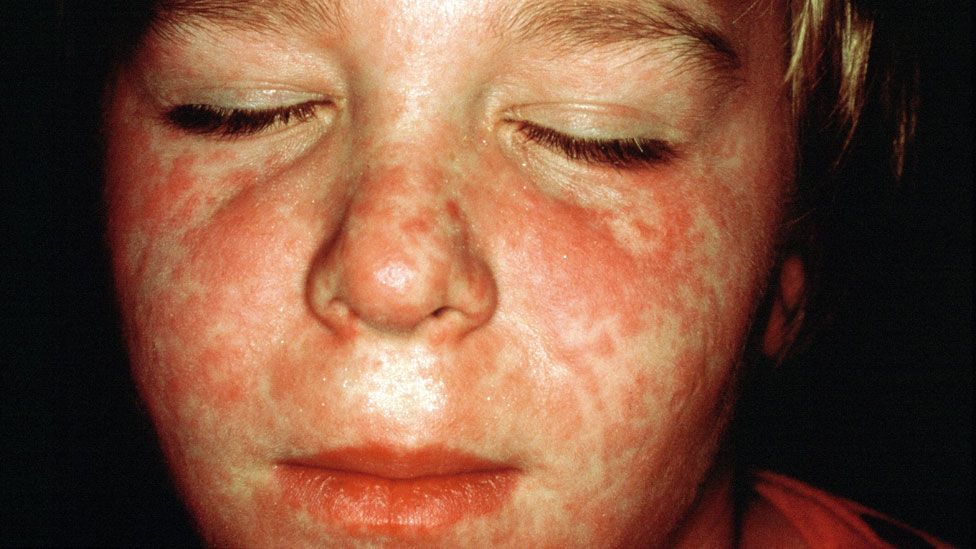 Image source, Science Photo Library
Image source, Science Photo Library
By Michelle Roberts
Digital health editor
England is now seeing clusters of measles cases across a number of regions including London, the North West, Yorkshire, The Humber and the East Midlands, as well as the West Midlands.
There have been 166 cases in the last month, with 56 of those in the last week, latest figures reveal.
Measles is highly contagious and is likely to keep spreading unless more people are vaccinated, experts warn.
Symptoms include a rash and fever.
The West Midlands accounted for about half of the 166 cases seen since 15 January, mostly in Birmingham. Case numbers in that region now appear to be stabilising.
- 12% (20/166) of cases have been in London
- 10% (17/166) in the North West
- 10% (16/166) in Yorkshire and The Humber
- 9% (15/166) in the East Midlands
Incident Room: Measles Outbreak: Why now?
Health experts examine why the virus is back and what can be done to get rid of it?
Many of the infections have been in children and young people.
Measles is almost entirely preventable with vaccination using the MMR (measles, mumps and rubella) jab.
Dr Vanessa Saliba, from the UK Health Security Agency, said: "As expected, due to worryingly low MMR vaccine uptake in some areas across the country, we are now starting to see clusters of cases in other regions.
"While parents are coming forward to take up the offer of the MMR vaccine for their children, there are still hundreds of thousands of children who remain unprotected, and therefore remain at risk of serious complications or lifelong disability.
"I strongly urge parents to take up the offer of the MMR vaccine now to make sure their child is protected."
What is measles and what are the symptoms?
Measles is caused by a virus that is spread by coughs and sneezes.
- high fever
- sore, red and watery eyes
- coughing
- sneezing
Small white spots may appear inside the mouth
A blotchy red or brown rash usually appears after a few days, typically on the face and behind the ears, before spreading to the rest of the body.
It can be harder to see on brown and black skin.
You can catch it any age if you have not been vaccinated.
After both MMR vaccine doses, 99% of people are protected against measles and rubella, and 88% are protected against mumps.
The first MMR dose is usually given at 12 months old, while the second jab is administered at about three years and four months.
The number of young primary school children who have had both doses of the MMR vaccine is below World Health Organization targets.
Approximately 85% of children in England in 2022-23 had received two MMR doses by their fifth birthday, the lowest level since 2010-11. The recommended figure is 95%.
That means a few million children under the age of 16 have not had both doses and are potentially at risk.
Measles normally clears up within seven to 10 days. However, complications can include pneumonia, meningitis, blindness and seizures. For some people, it is deadly.
 (1).png)
 10 months ago
11
10 months ago
11
